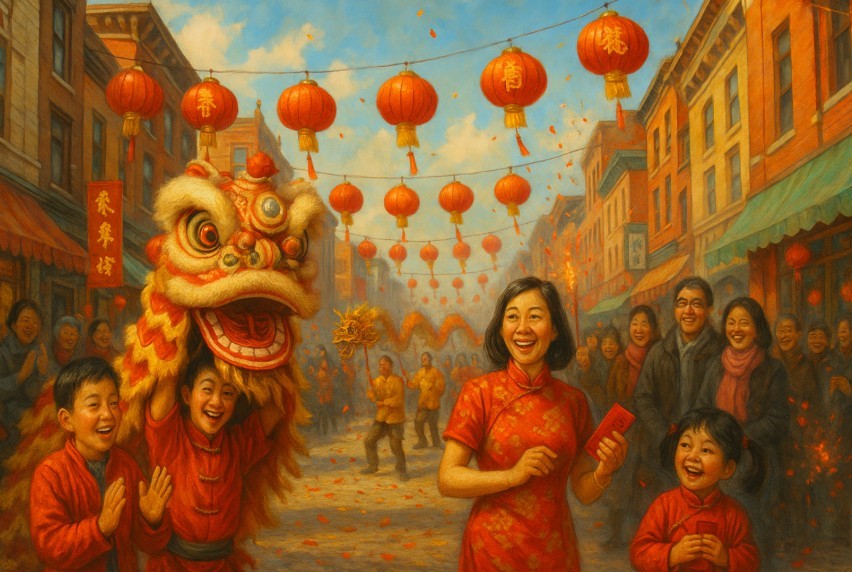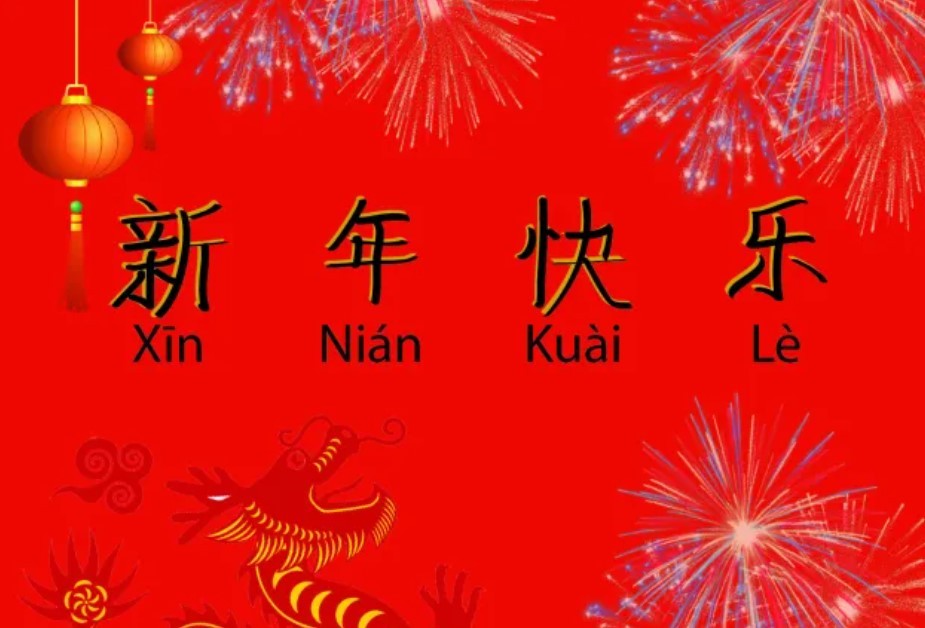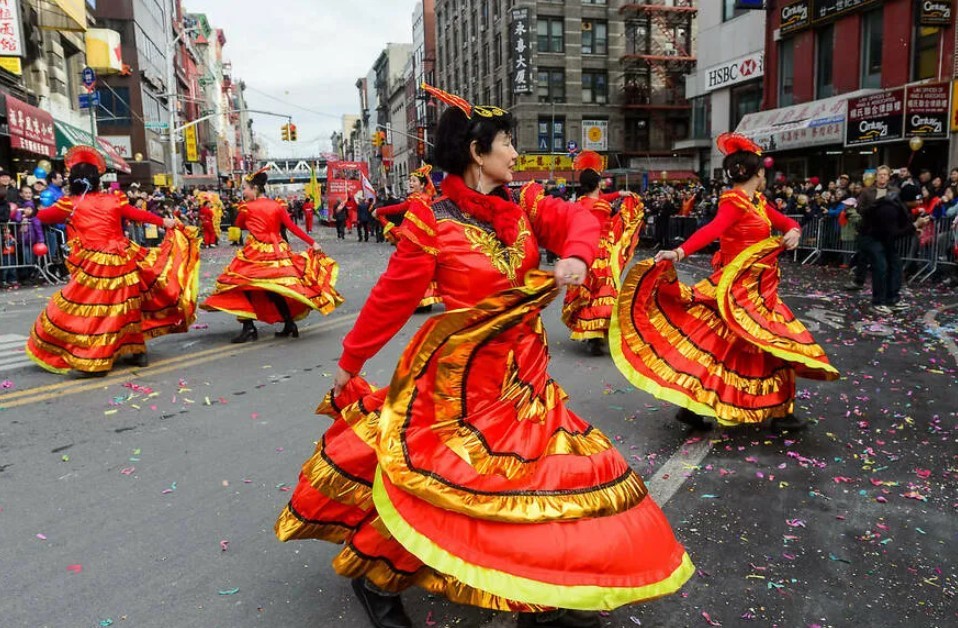Lunar New Year: 8 Traditional Lucky Foods
 |
| Food plays an important role in Chinese culture. Photo: Freepik |
Our collection includes recipes especially popular during the Chinese New Year season; from appetizers to desserts, these lucky treats are delicious, worth a try and represent Chinese culture at one of the standout times of annual tradition.
#1. Sweet glutinous rice cake (Nian Gao)
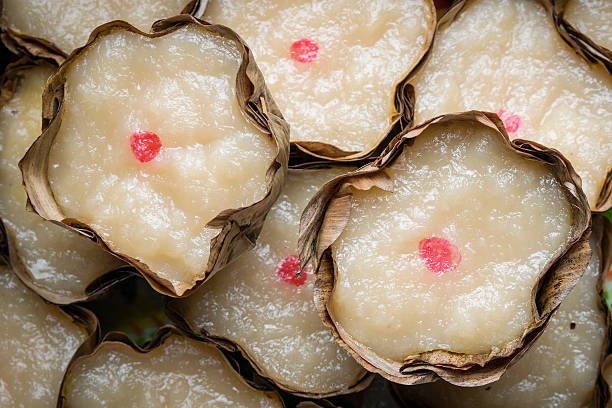 |
| Photo: iStock |
Sometimes translated as a "new year cake" or just "year cake," Nian Gao is made of glutinous rice flour and/or sweet glutinous rice flour and can be either sweet or savory depending on the region. "It's really sticky and dense," Kho says. He explains that "nian" translates to "year," which is a homophone for the word for "sticky." "They're two different characters, but they're pronounced exactly the same," he says. Gao loosely means "higher up," so when said aloud, Nian Gao is meant to signal higher success in the new year, á cited by The Oprah Magazine.
Often wrapped in paper and commonly eaten on Chinese New Year's eve, the sweet variety of year cake that's more native to southern China is made with sugar, and can be given as a gift for good fortune for the new year. The savory version is typically stir-fried in dishes in Shanghainese and northern Chinese restaurants, according to Kho.
How to make Chinese Nian Gao at home:
Ingredients
1 and 1/2 cup plain rice flour
1 cup glutinous rice flour
3/4 cup water or 1/4 cup more
1 tablespoon vegetable oil
Instructions
1. In a large mixing bowl, mix the flours. Stir the water in slowly and then add vegetable oil. Knead the dough for several minutes until all the ingredients are well combined.
2. Brush some oil on your container and then transfer the mixture in. Press the surface and then steam for around 30 minutes (depending on the thickness). And then cool down slightly.
3. Place a plastic wrapper on a clean surface and then transfer the steamed mixture out. Fold the plastic wrapper back so the upper side of the mixture is covered with plastic wrapper, otherwise, it might be quite sticky. Knead the dough for several minutes until smooth or pat with a rolling pin.
4. Divide the dough in half and then shape one half into round 3 cm diameter log and the other half into several 1 cm diameters long logs. Cover each one with plastic wrappers and put them into the fridge overnight to finalize.
5. Cut the 1cm diameter long log into 5~7 cm long sections and slice the 3cm diameter long log.
#2. Spring rolls
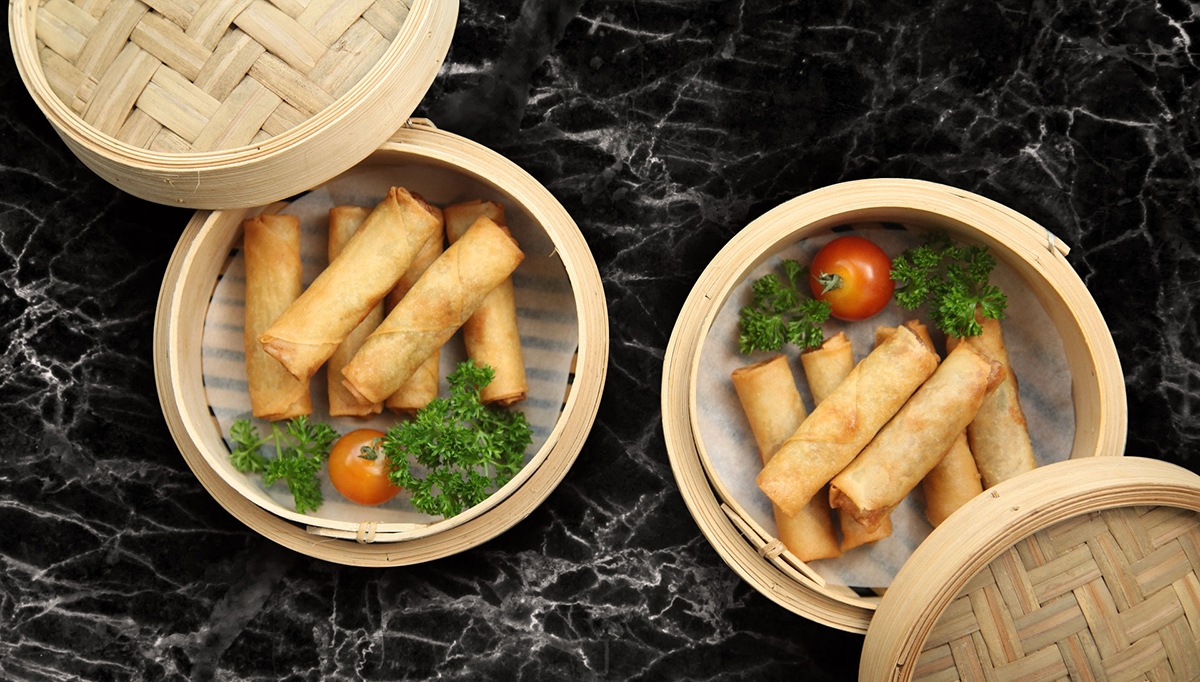 |
| Photo: SQ Professional |
According to The Spruce Eats, spring rolls and egg rolls symbolize wealth because their shape is similar to gold bars. These spring rolls are filled with shredded pork and shrimp, as well as black mushrooms, mung bean sprouts, and garlic chives, but vegetable-only rolls are also available. The filling is seasoned with a sauce made of oyster sauce, Chinese rice wine, soy sauce, and sesame oil.
While you might eat these savory fried rolls year-round, they're a Chinese New Year favorite because they symbolize wealth. Per China Highlights, the lucky saying associated with eating spring rolls is "黄金万两 (hwung-jin wan-lyang), meaning "a ton of gold," suggesting that the spring rolls resemble gold bars.
How to make Chinese spring rolls:
Here's our recipe for China’s greatest side dish, the humble spring roll, a cylindrical-shaped culinary superstar that has been eaten in the country since the Eastern Jin dynasty (317-420ad).
The ubiquitous spring roll is a crisp, paper-thin pastry wrapped around a dazzling array of fillings, from carrots and bean shoots to shrimp, pork, and duck, as cited by Lonely Planet. Bite, crunch, grin.
Ingredients (makes around 20 rolls)
| For the rolls: - 18-20 spring roll wrappers - 1 egg, lightly beaten - 4-5 cups oil, for deep-frying - plum sauce or sweet and sour sauce - A top-down view of a handful of deep-fried spring rolls placed on a beautiful plate with chopsticks and boiled rice on the side. | For the filling: 2 cups bean shoots 6 dried shiitake mushrooms 2½ tbs oyster sauce 1 tbs chicken broth (water is an adequate substitute) 2 tsp light soy sauce 1 tsp sugar 2 tbs oil, for stir-frying 55g (2oz) canned bamboo shoots, finely sliced ½ red pepper, diced 1 medium carrot, grated salt and pepper, to taste |
Instructions:
For the filling:
Step 1: Rinse and drain the bean shoots. Soak the dried mushrooms in warm water. Let the bean shoots dry and the mushrooms soak for 30 minutes.
Step 2: Squeeze the excess water out of the mushrooms, then slice them thinly.
Step 3: Mix the oyster sauce, broth, soy sauce, and sugar into a small bowl. Set aside.
Step 4: Spread 2 tbs hot oil around a frying pan. Once sizzling, add the dried mushrooms, then the bamboo shoots, followed by the red pepper, bean shoots, and grated carrot.
Step 5: Stir in the oyster sauce mixture and add salt and pepper to taste.
For the rolls:
Step 1: Lay one wrapper with a corner towards you, then paint the edges with egg.
Step 2: Place 2 tbs of the filling across the bottom half, not quite to the edges. Fold the bottom corner of the wrapper over and tuck it under the filling, fold in the left and right sides, then roll. Brush the top corner lightly with egg, fold over and seal.
Step 3: Place the roll seam-side down on a baking sheet and brush lightly all over with oil. Repeat with the remaining wrappers and filling.
Step 4: Heat the oil for deep-frying to hot, then add several spring rolls at a time and cook until crispy and golden brown (approximately three to four minutes). Remove, then drain on a paper towel. (Healthy alternative: instead of frying, bake the rolls for 12–15 minutes at 180°C (360°F) until golden and crisp.)
Step 5: Serve with plum sauce or sweet-and-sour sauce for dipping.
#3. Dumplings (Jiaozi)
 |
| Photo: Freepik |
"Dumplings are supposed to look like the ingot, the gold and silver pieces used as money in ancient times," Kho explains. "It represents being prosperous—you have all of this money you're eating," he adds, laughing. The white dumpling wrapper most people are accustomed to seeing is associated with the silver ingot. But the rarer egg wrapper dumpling, which Kho says is essentially an omelet with the filling inside, signifies gold (here's a recipe from Kho).
According to tourism organization China Highlights, some believe that the fillings have certain lucky connotations themselves; cabbage and radish eaten on New Year's Eve bodes well for skin and mood, while you shouldn't eat Chinese sauerkraut dumplings "because it implies a poor and difficult future."
How to make Chinese pork dumplings ( recipe by All Recipes)
Ingredients
| ½ cup of soy sauce 1 tablespoon seasoned rice vinegar 1 tablespoon finely chopped Chinese chives 1 tablespoon sesame seeds 1 teaspoon chile-garlic sauce (such as Sriracha®) 1 pound ground pork 3 cloves garlic, minced 2 tablespoons finely chopped Chinese chives | 1 egg, beaten 2 tablespoons soy sauce 1 ½ tablespoon sesame oil 1 tablespoon minced fresh ginger 50 dumpling wrappers 1 cup vegetable oil for frying 1 quart water, or more as needed |
Instructions
Step 1: Combine 1/2 cup soy sauce, rice vinegar, 1 tablespoon chives, sesame seeds, and chile sauce in a small bowl. Set aside.
Step 2: Mix pork, garlic, egg, 2 tablespoons chives, soy sauce, sesame oil, and ginger in a large bowl until thoroughly combined. Place a dumpling wrapper on a lightly floured work surface and spoon about 1 tablespoon of the filling in the middle. Wet the edge with a little water and crimp together forming small pleats to seal the dumpling. Repeat with remaining dumpling wrappers and filling.
Step 3: Heat 1 to 2 tablespoons vegetable oil in a large skillet over medium-high heat. Place 8 to 10 dumplings in the pan and cook until browned, about 2 minutes per side. Pour in 1 cup of water, cover, and cook until the dumplings are tender and the pork is cooked for about 5 minutes. Repeat for remaining dumplings. Serve with soy sauce mixture for dipping.
#4. Peking Duck
Duck symbolizes fidelity in Chinese culture, and Peking duck has a long history that can be traced back to the Ming Dynasty's imperial court menu. By the mid-20th century, this dish became a national symbol of China.
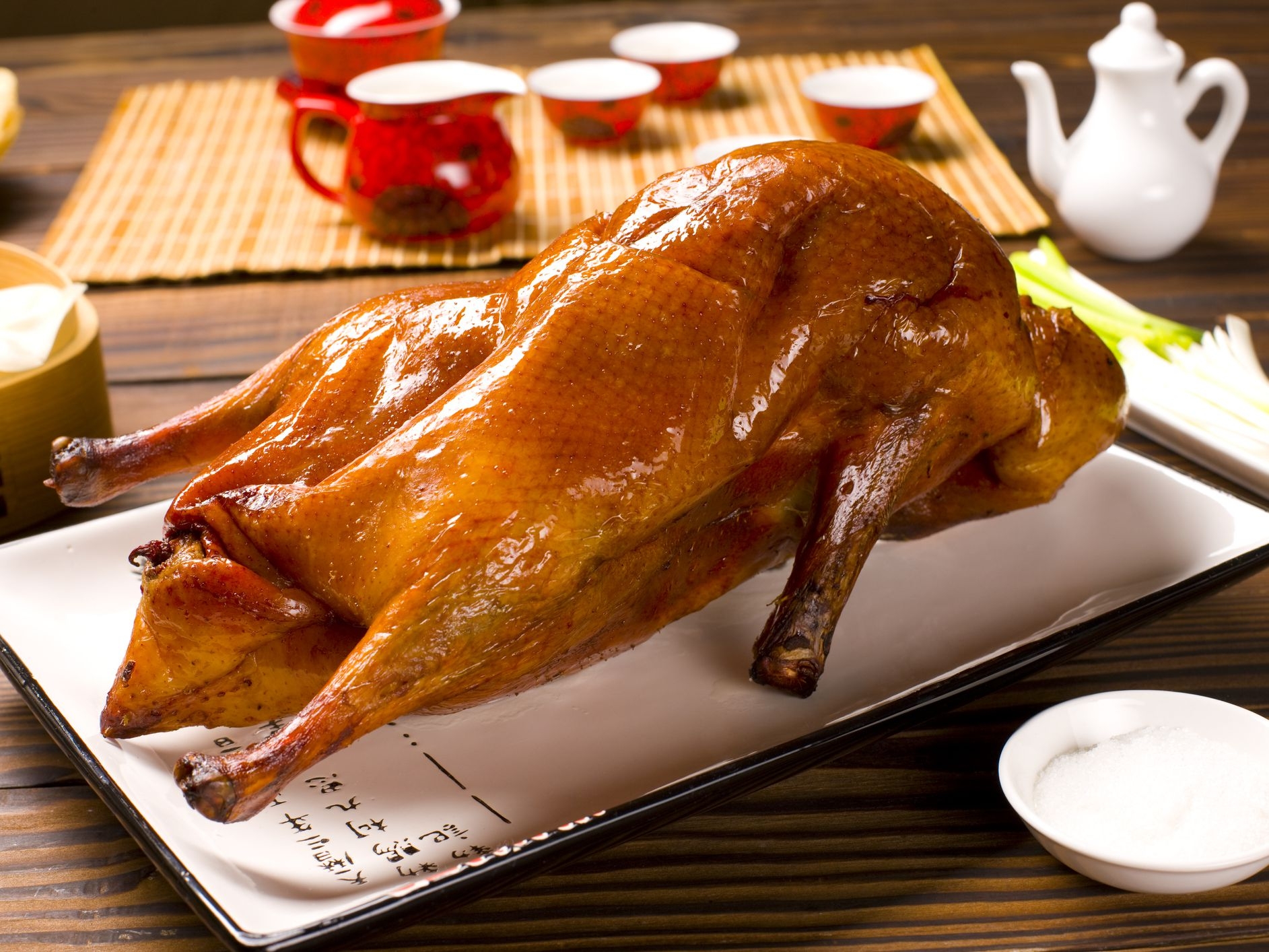 |
| Photo: The Spruce Eats |
Known for its thin, crispy skin and tender meat, the trick to achieving this texture is the result of many steps of boiling, hanging the duck to dry, basting, and roasting. Labor intensive, this dish is often served rolled in Mandarin crepes with hoisin sauce, or sliced in front of guests with a serving per person consisting of more crispy skin than meat.
How to make Chinese Peking duck at home:
Ingredients
1.6-1.8kg duck , fresh or thawed thoroughly if frozen
For the honey syrup mixture
juice of 1 lemon
3 tbsp clear honey
3 tbsp dark soy sauce
150ml Shaohsing rice wine or dry Sherry
Instructions:
STEP 1: Place all the honey syrup ingredients in a large pan with 1.2 litres water and bring to the boil. Turn the heat to low and simmer for about 20 mins.
STEP 2: Meanwhile, rinse the duck well, blot it completely dry with kitchen paper, then put it on a rack in a roasting tin. Using a ladle, pour the syrup over the duck several times until the skin is completely coated on all sides. Leave the duck to dry out, uncovered, in the fridge overnight. When the duck has dried, the skin should feel like parchment paper, as cited by BBC Good Food.
STEP 3: Heat oven to 240C/220C fan/gas 9. Sit the duck breast-side up on the rack in the roasting tin. Add 150ml water to the tin to prevent the fat from spattering, then roast in the oven for 15 mins. Reduce the heat to 180C/160C fan/gas 4 and continue to roast for 1 hr 10 mins.
STEP 4: Remove the duck from the oven and let it sit for at least 10 mins before you carve it. Using a cleaver or a sharp knife, cut the skin and meat into pieces and arrange them on a warm serving platter. Or, if you prefer, shred the meat using two forks.
#5. Longevity Noodles
Known as changshou mian, these noodles are up to 2 feet long—and the longer the noodle, the luckier you are! No wonder their name means “long-life noodles.” Just be careful not to accidentally break the noodles while you’re cooking. That’s extremely bad luck, as it foreshadows cutting someone’s life short.
 |
| Photo: 196 Flavors |
How to make Chinese longevity noodles at home:
No Chinese New Year celebration would be complete without noodles, Fine Cooking cites. Noodles are eaten to represent long life and should never be cut. Mushrooms naturally grow rapidly and symbolize prosperity. Eating green vegetables like watercress is important because the green represents wealth in the year ahead.
Ingredients
| 5 Tbs. grapeseed oil 4-1/2 cups sliced maitake mushrooms Kosher salt 1 cup thinly sliced scallions, ¼ cup greens 1-1/2 Tbs. minced garlic 1-1/2 Tbs. minced fresh ginger 2 cups thinly sliced carrot (about 4-1/2 oz.) 2 cups thinly sliced zucchini (about 5-1/2 oz.) | 1-1/2 cups thinly sliced red bell pepper 8 lightly packed cups watercress (about 8 oz.) 8 oz. fresh lo mein noodles, cooked then rinsed 2 Tbs. vegetable oyster sauce or soy sauce 1/2 cup vegetable stock 2-1/2 Tbs. fresh lemon juice Freshly ground black pepper 1 Tbs. sesame oil, for drizzling |
Instructions:
Heat 3 Tbs. of the grapeseed oil in a wok or a large, deep skillet over medium heat, and swirl to coat the pan. When the oil shimmers, add the mushrooms in batches, and sear, turning occasionally, until golden brown in places, 3 to 4 minutes per batch. Transfer to a plate lined with paper towels, and salt generously.
Add the remaining 2 Tbs. grapeseed oil to the pan. Add the 1 cup scallions, garlic, and ginger. Cook, stirring constantly, until just fragrant, about 30 seconds. Add the carrot, zucchini, and bell pepper.
Cook, stirring frequently until the vegetables begin to soften, about 2 minutes. Add the watercress, and cook until it just starts to wilt, tossing frequently about 1 minute. Lower the heat to a simmer, add the mushrooms, noodles, oyster sauce, and stock. Cook, tossing frequently until the mushrooms and noodles are just heated through, about 3 minutes.
Add the lemon juice, and season to taste with salt and pepper. Transfer to a large platter, drizzle with the sesame oil, garnish with the reserved scallion greens, and serve.
#6. Steamed Whole Fish
The word for fish, "yu," sounds like the Chinese words for both "wish" and "abundance." As a result, it's customary to serve a fish at the end of the New Year's evening meal, symbolizing a wish for abundance in the coming year. For added symbolism, the fish is served whole, with the head and tail attached, representing a good beginning and ending for the months to come.
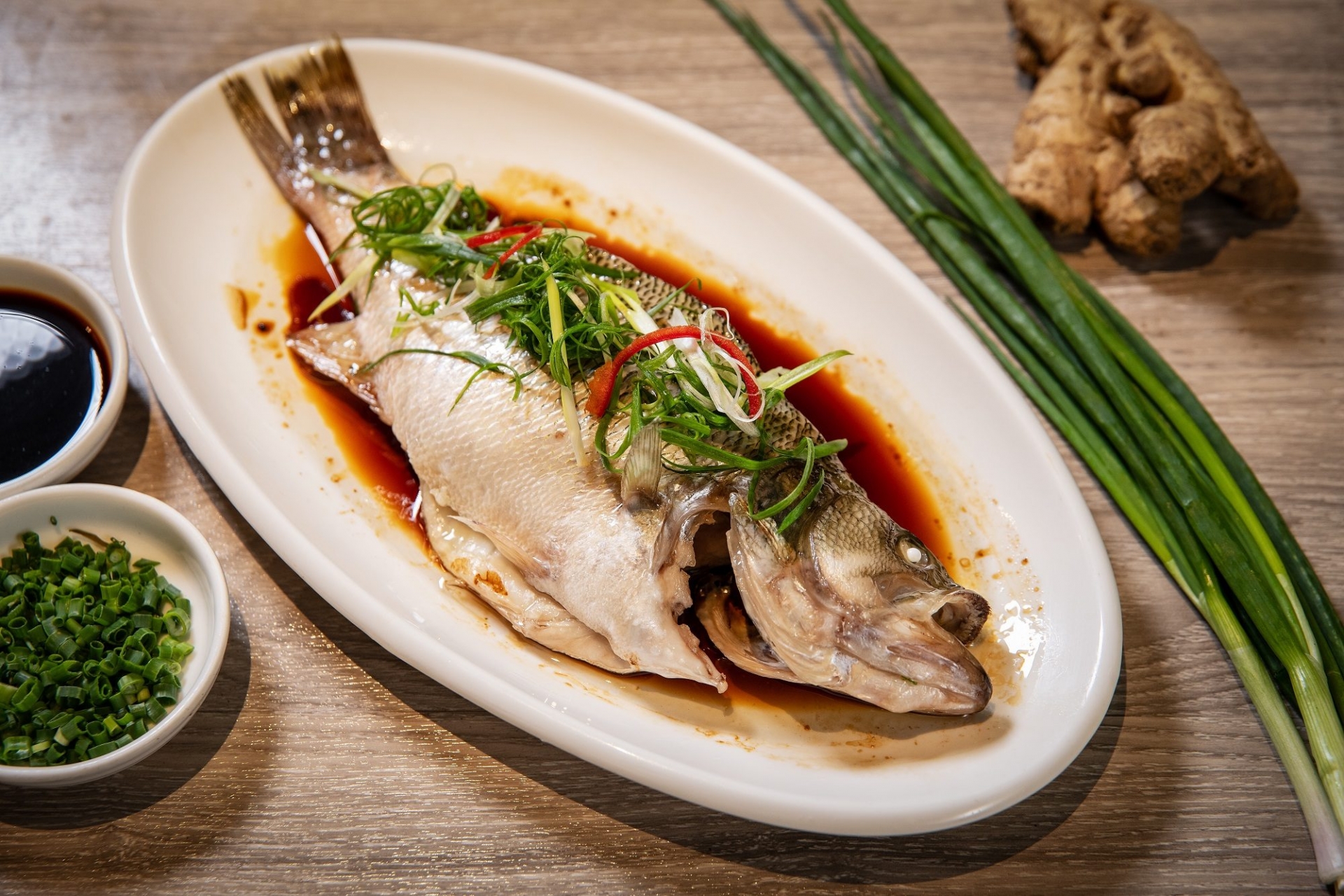 |
| Photo: TASTE Cooking |
This recipe calls for salted black beans that are mixed with ginger, garlic, soy sauce, and sesame oil and rubbed on the inside and outside of the whole fish. The fish is then steamed until it flakes easily and is garnished with curled green onions.
How to cook Chinese steamed whole fish:
Ingredients
550 grams (20 ounces) head-on sea bass (tilapia, flounder, or other fish with white flesh, scaled, gutted (*see footnote 1)
1 and 1/2 pieces thumb sized ginger ,1 thumb sliced, 1/2 thumb julienned (see footnote 2)
1 cup green onion , chopped (6 centimeters /2.5 inches in length)
2 tablespoons Shaoxing wine
1 teaspoon sesame oil
1 tablespoon peanut oil (or vegetable oil)
2 dried chili peppers
1/2 teaspoon Sichuan peppercorn
2 tablespoons seasoned soy sauce for seafood (or regular soy sauce)
Instructions
1. Before cooking, wash the fish thoroughly and drain. Place the fish in a mesh colander at room temperature for 30 minutes to 1 hour, until completely dry. (Or dry by pressing the fish with a paper towel).
2. Place a quarter of the green onions on a plate large enough to hold the entire fish. The green onions will hold the fish so it won’t stick to the plate when cooked.
3. Stuff ginger slices and a quarter of the green onions (white part) into the cavity of the fish. Rub both sides of the fish with sesame oil. Cover the fish with another quarter of the green onions. Pour Shaoxing wine over the fish.
4. In a large, deep skillet (or steamer or wok), add half an inch of water and place a steaming basket upside down (or heat resistant colander or strainer) in the middle (see footnote 3). Cover and bring water to a boil over high heat. Carefully place the plate holding the fish onto the steaming basket, cover, and steam over high heat for 5 to 8 minutes, until you can easily pull the flesh from the bone with a fork. Stop the heat immediately. Carefully use a spatula to transfer the fish to another large plate. Use chopsticks to remove the ginger and green onion from inside and above the fish, and discard the used ginger and onion.
5. Spread the remaining ginger strips and green onions on top of the fish and set aside. Make sure the seasoned soy sauce is ready beside the fish.
6. In a wok or small skillet, heat oil over medium-high heat. When the oil is warm, break chili peppers and add them, with the Sichuan peppercorns, into the oil. Stir with a spatula until fragrant, about 40 seconds. Turn to lowest heat, carefully use a ladle to scoop out the chili pepper and peppercorn, and discard them. Immediately use a ladle to drizzle the hot oil over the fish. You should hear the sizzling of the oil when it touches the fish. Immediately pour the seasoned soy sauce onto the fish.
#7. Sweet Rice Balls
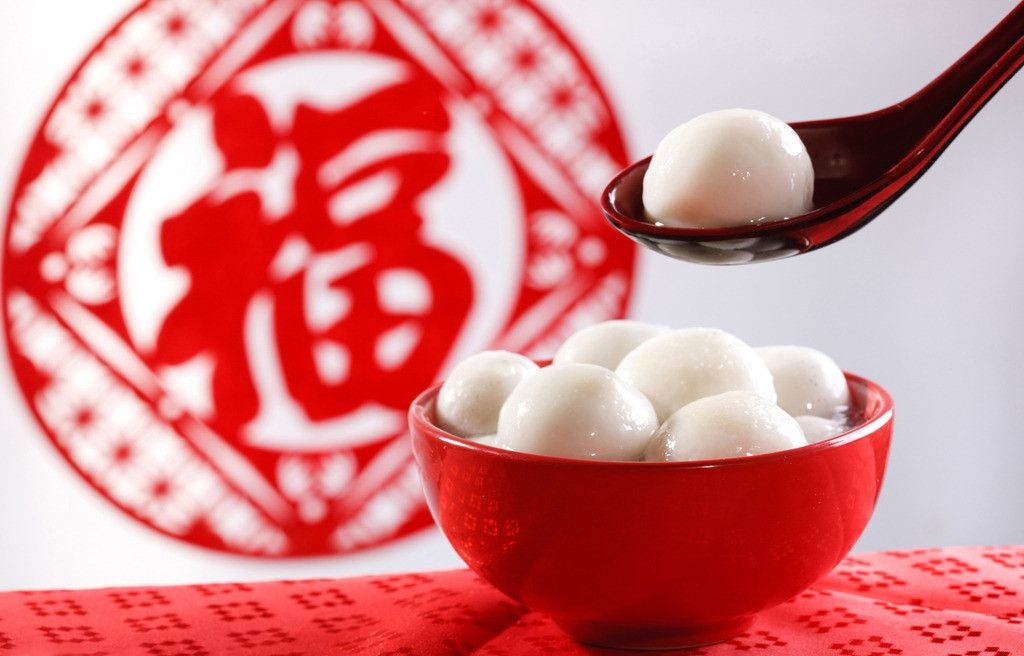 |
| Photo: Pinterest |
Sweet rice ball (汤圆 Tāngyuán /tung-ywen/) is the main food for China's Lantern Festival, however, in south China, people eat them throughout the Spring Festival. The pronunciation and round shape of tangyuan are associated with reunion and being together. That's why they are favored by the Chinese during the New Year celebrations, China Highlights cites.
How to make Chinese sweet rice balls
Ingredients
1 cup glutinous rice flour, plus more to dust
1/3 cup lukewarm water
Red bean paste (can be purchased at most Asian grocery stores)
Food coloring (optional)
Instructions
1. In a mixing bowl, add 1/3 cup of lukewarm water to the glutinous rice flour, gently stirring with a spoon as you slowly pour in the water.
2. Gently knead the dough to form a ball. If a dough ball does not easily form, add a teaspoon of water at a time and continue to knead until a dough ball forms and is the consistency of soft putty, as cited by KCET.
3. Bring a small saucepan of water to a boil. Pinch off a 1-inch round piece of dough and flatten it into a disk with the palms of your hand and place the dough into the boiling water. Once the dough floats, remove it with a sieve.
4. Add the boiled dough to the rest of the dough, and knead until it becomes uniform inconsistency. You can divide the dough and add a few drops of food coloring if you want colored glutinous rice balls.
#8 The 'togetherness' box
 |
| A togetherness box - filled with sweets A sweets box filled to the brim with good wishes for fertility and more.(Supplied: Lin Jie Kong) |
This collection of snacks is handy to have for guests who drop by, and is absolutely chockers with wishes and wordplay.
You can buy pre-packaged bundles of the sweets combinations in Asian grocery stores, or mix and match your own.
In the centre of the box are often melon seeds, dyed red for luck.
They're called "gua zi" in Chinese, which sounds like the saying "nian sheng gui zi": may you give birth to precious sons! (Or children, as many people would interpret it as these days.)
There's also lotus seeds ("lian zi", which also shares the zi sound for the word sons), and lotus roots ("lian ou", which sounds like "to have").
It's also common to have a range of sweets, such as white rabbit lollies, coconut lollies (coconut in Chinese sounds like the word for grandfather and the word for sons) and shiny foil-wrapped red packet lollies for good luck.
So basically it's a box of sweetness that wishes you many children. No pressure!
Of course, there are many, many lucky Lunar New Year foods: pineapple tarts, eight treasure rice, roast meats.
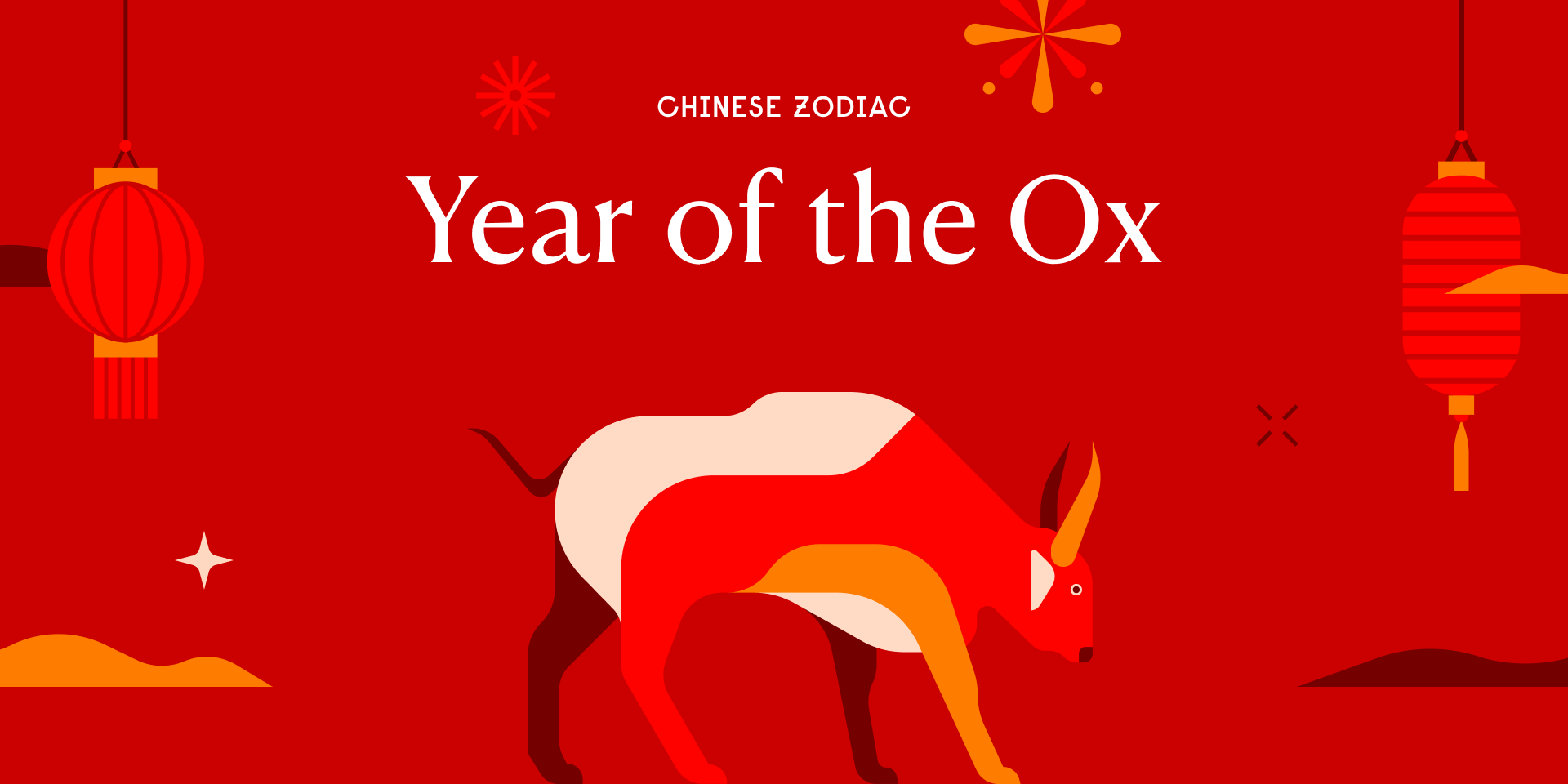 Chinese Lunar New Year 2021: Facts about the year of OX, Traditions, Customs Chinese Lunar New Year 2021: Facts about the year of OX, Traditions, Customs Chinese New Year is annually celebrated between January and February and the occasion is commonly found in Asia with many ways to celebrate according to ... |
 Chinese Lunar New Year 2021: Red Costumes, Tips to Wear For a Lucky Year Chinese Lunar New Year 2021: Red Costumes, Tips to Wear For a Lucky Year Chinese New Year, Lunar New Year, is around the corner! Wishing you a lucky 2021 and a full-of-happiness year with those recommended clothes and ... |
 Chinese Lunar New Year: How Festivities Different in Each Country, Ideas for Virtual Celebration Chinese Lunar New Year: How Festivities Different in Each Country, Ideas for Virtual Celebration Chinese New Year is around the corner and each country having its own traditional way to celebrate one of the most significant occasions of ... |

